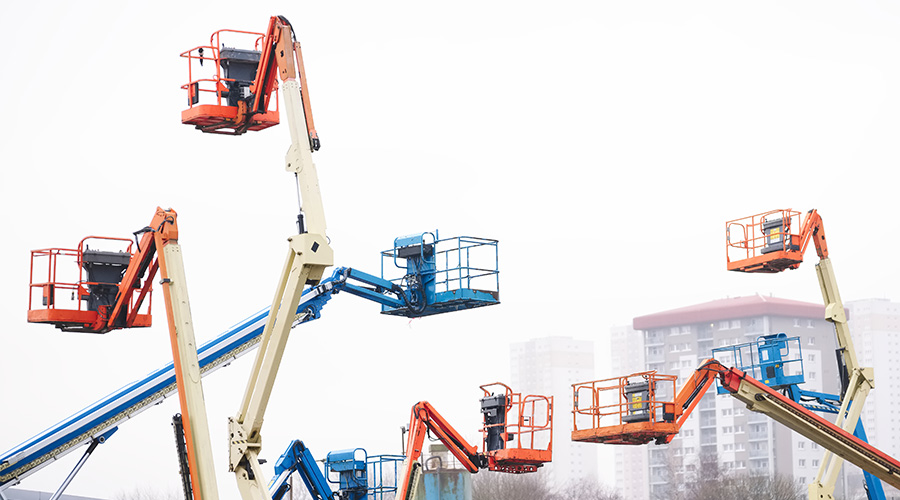 Before operators use an aerial work platform, they need to familiarize themselves with the lift safety standards to protect themselves and coworkers.
Before operators use an aerial work platform, they need to familiarize themselves with the lift safety standards to protect themselves and coworkers.Lift Safety: Training and Certification
With standards set forth by the ANSI and enforced by OSHA, managers need to ensure operators are familiar with the lift safety standards.
Training and certification
When the most appropriate lift is specified to handle the task at hand, managers next need to ensure operators are familiar with the safety standards and guidelines associated with lift safety.
The American National Standards Institute (ANSI) writes the standards for aerial work platform training, and the Occupational Safety and Health Administration enforces the standards. Before managers and operators use a lift or aerial work platform, they need to familiarize themselves with the ANSI lift standards.
“It is important that operators and service personnel are properly trained to use and maintain boom lifts,” Dovey says “Proper training also helps ensure safe and efficient operation of equipment, decreases downtime, increases productivity on the job site, and contributes to longer machine life. All of this impacts profitability, making it more important than ever to identify quality operator training programs for those who pilot machines and service training for those who maintain them. Operator training may include online, classroom and hands-on formats or a blend of all three.”
Hands-on training teaches operators in training how to operate actual equipment, under the watchful eye of an experienced, certified instructor.
“The minimum requirements for operator training in the United States include formal operator training plus product familiarization for each piece of equipment the operator will be using,” Elvin says. “In some cases, the general contractor on a project could prescribe job site specific requirements and maintain operator training records.”
Manufacturers are continually upgrading aerial work platforms with the latest technology and features designed to help operators work more safely and productively on the job site. Because of this, it is important for managers and operators to remain knowledgeable about lift safety.
“A recent and global change within the industry was the introduction of secondary guarding devices on boom lifts,” Elvin says. “These provide either warning or cut-out functions if the operator is in a situation where they become or may become entrapped in the platform by an overhead obstacle, such as ceiling beams,”
In addition to online, classroom and hands-on training, operators should also familiarize themselves with the manufacturer’s guidelines.
“Operators should follow the manufacturer’s guidelines at all times, which can be usually found in the operator manual that comes with the lift, and on labels, decals and the serial plate applied to the lift,” Elvin says. “All operators should be suitably trained and familiarized with the piece of equipment that they are required to operate, and complete the daily checks as prescribed within the operator manual.”
When operator have become familiar with the manufacturer’s guidelines and the ANSI Standards, they can take their safety one step further and begin assessing the job site with safety in mind.
Related Topics:














